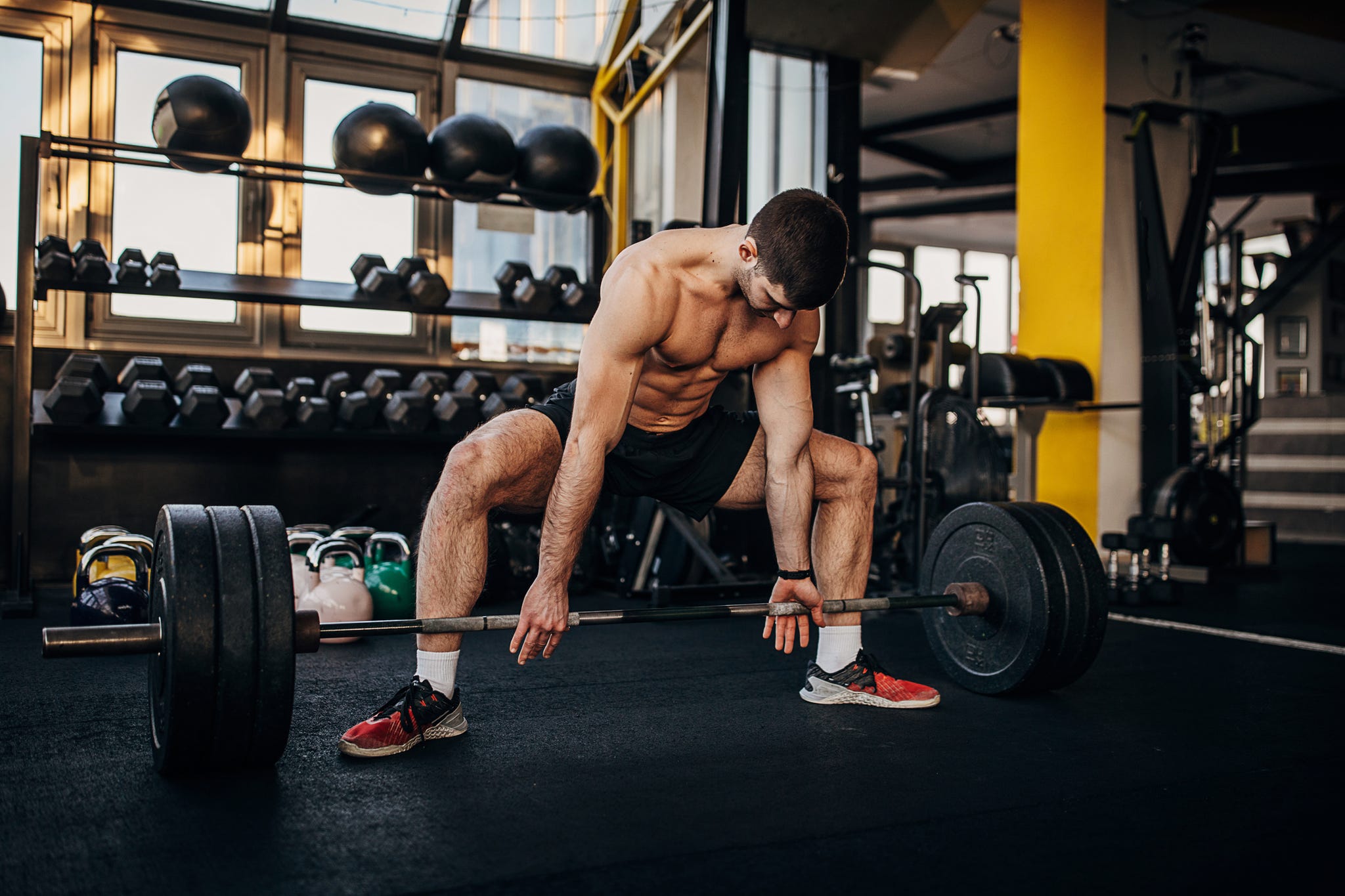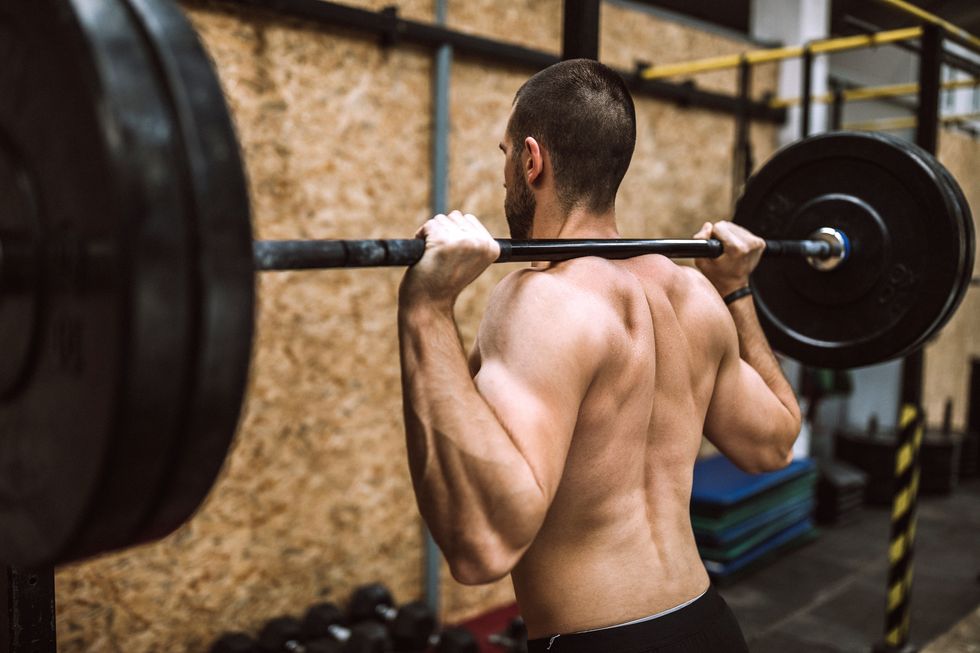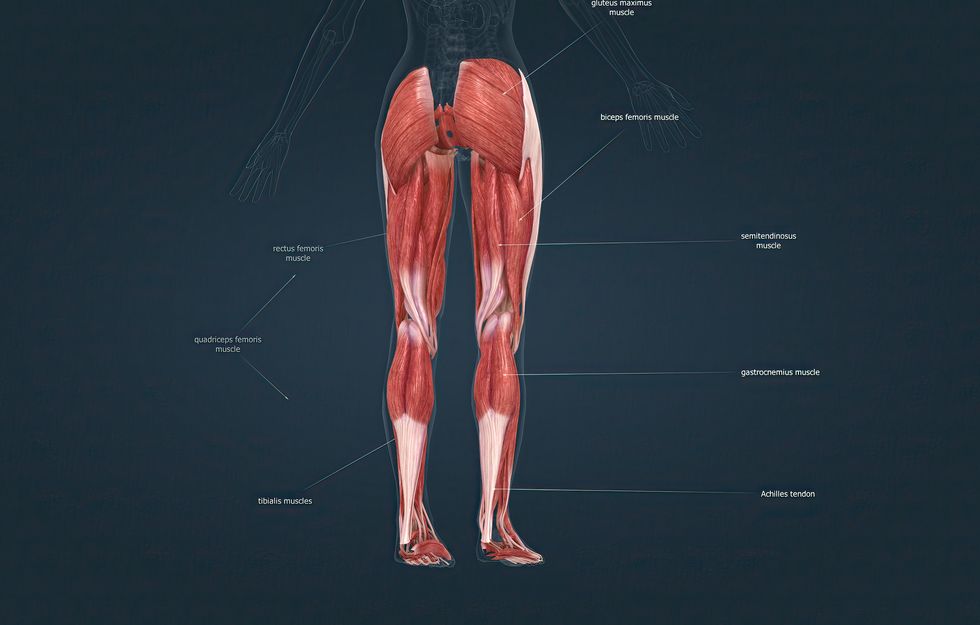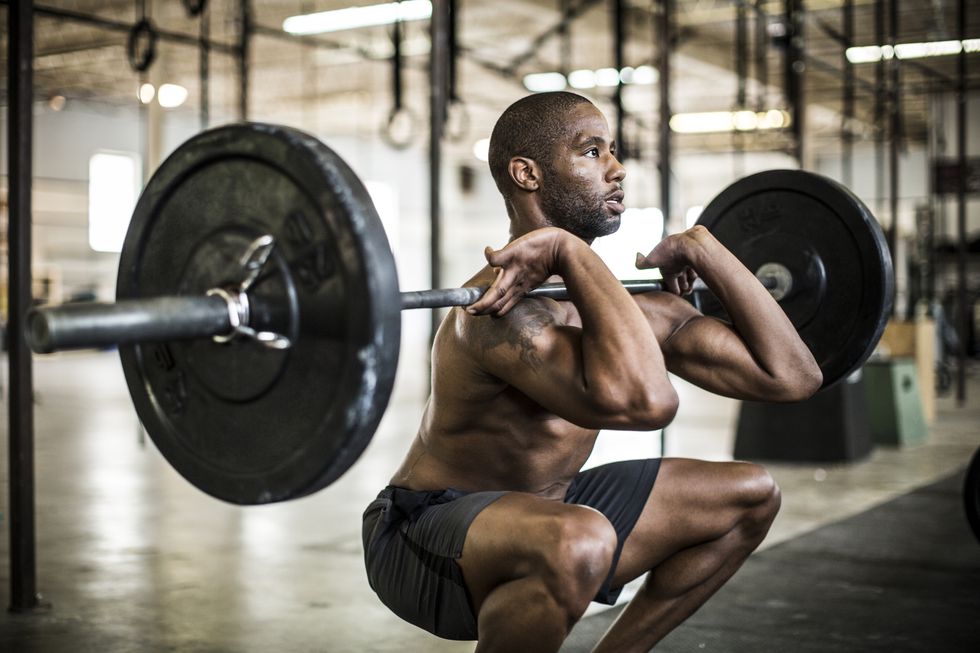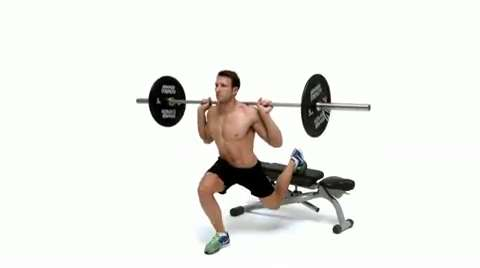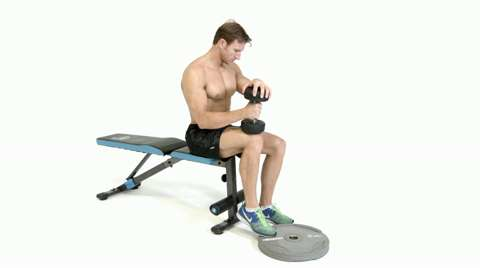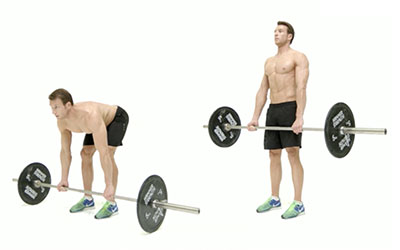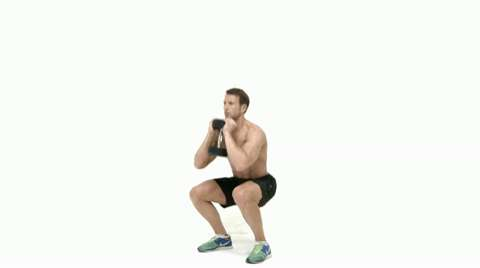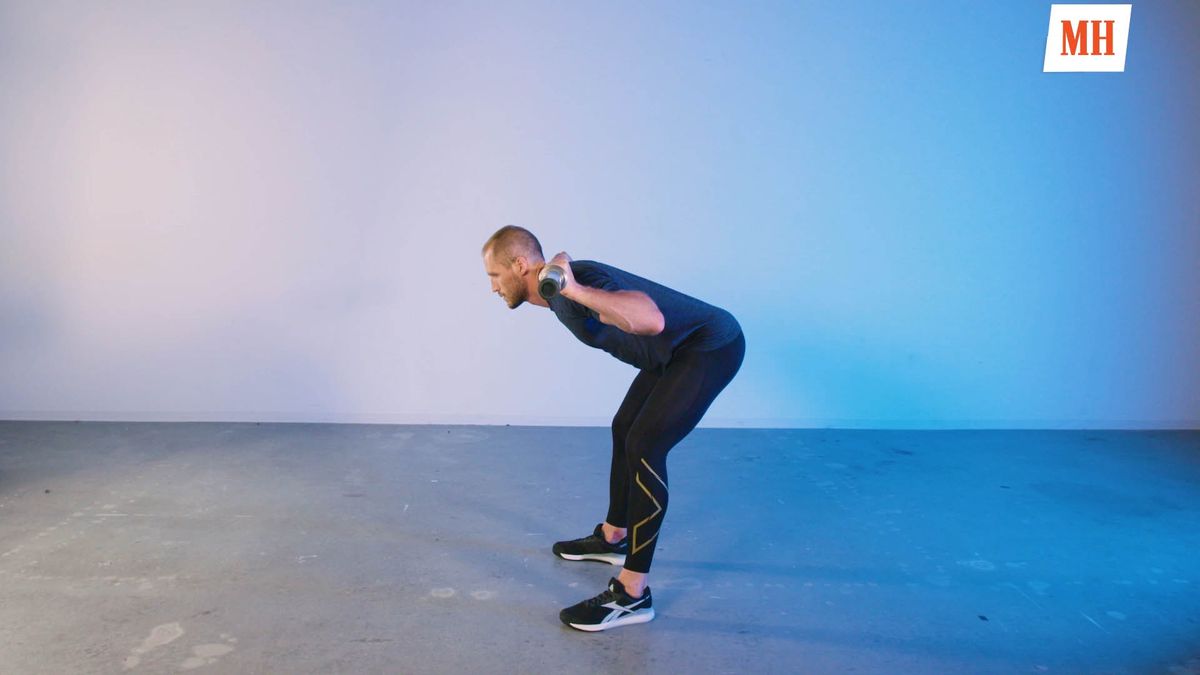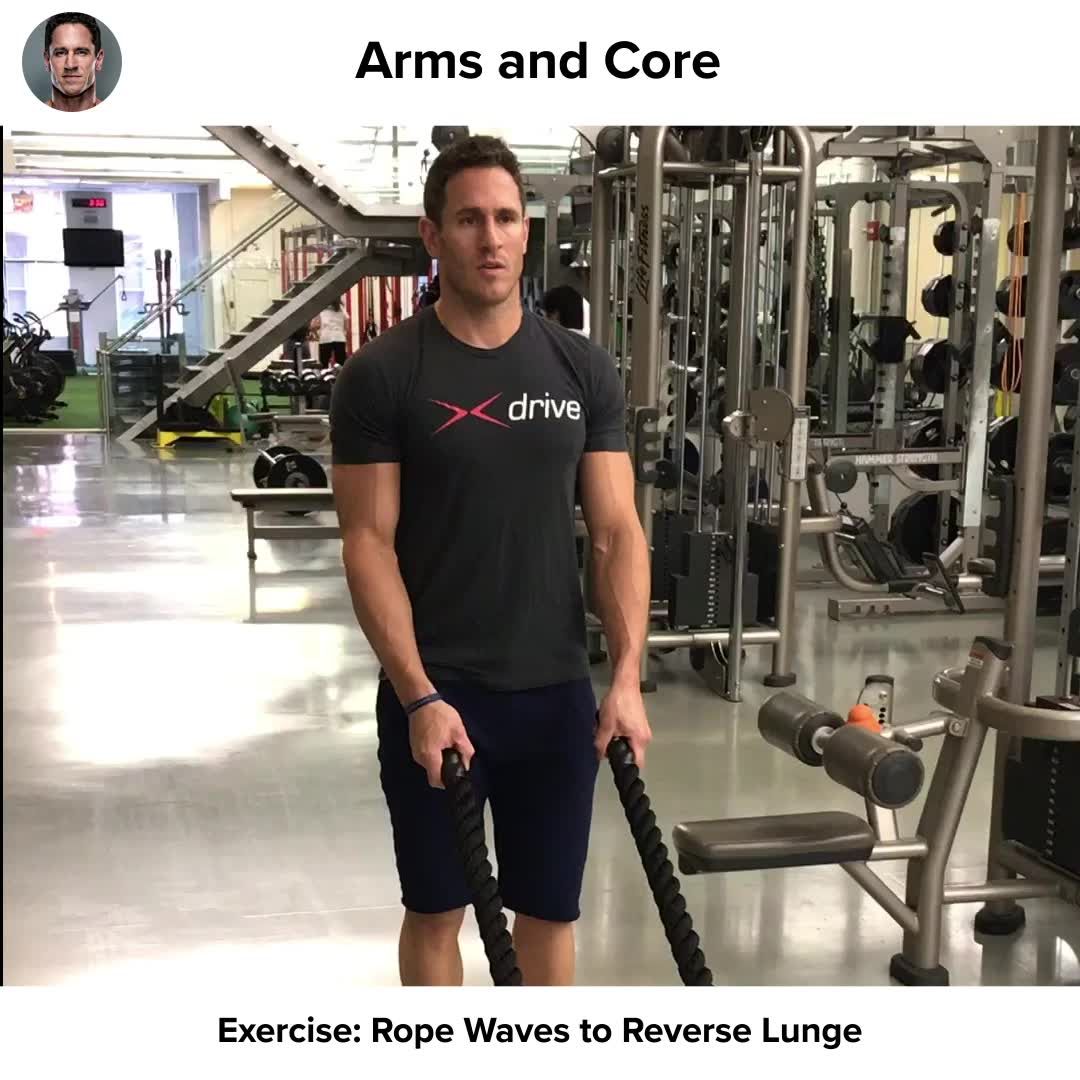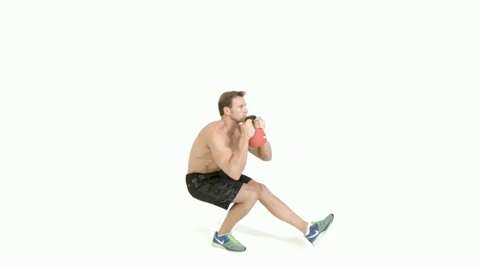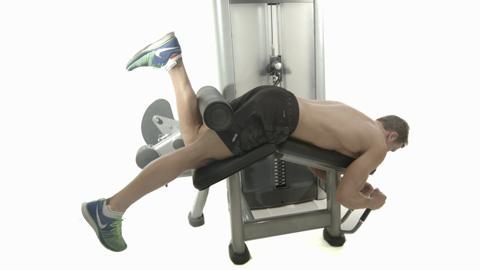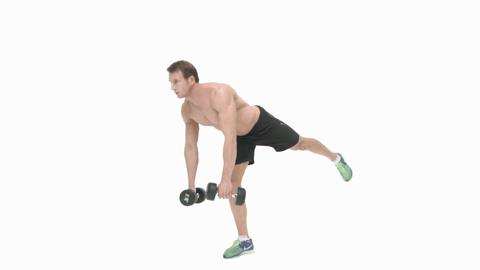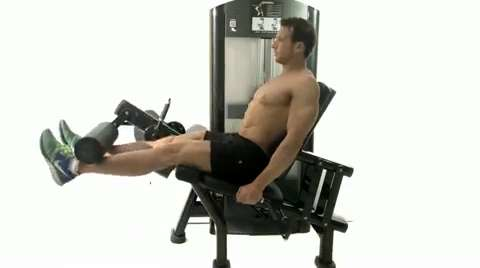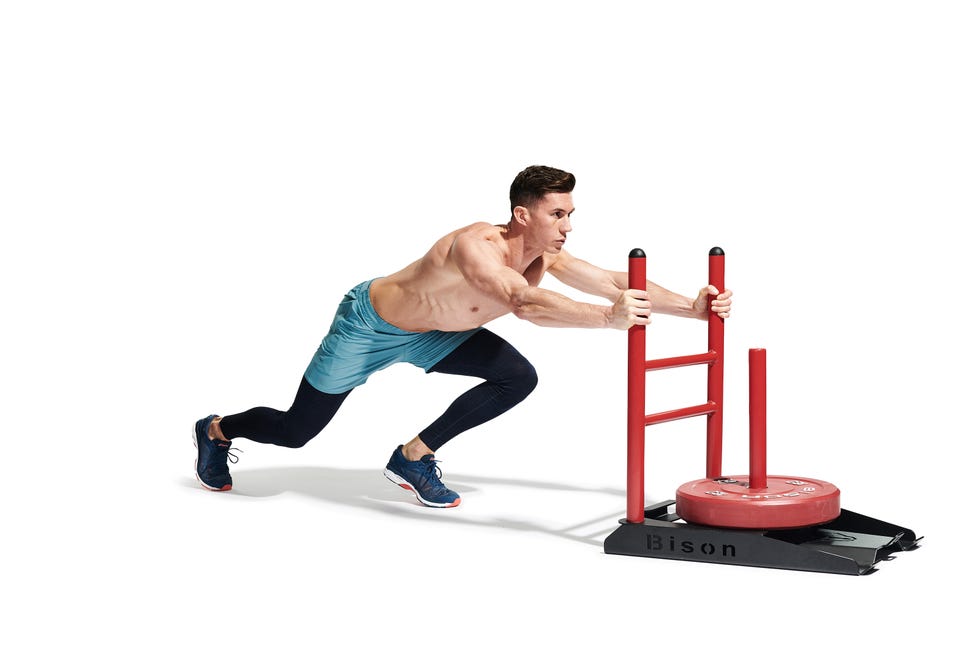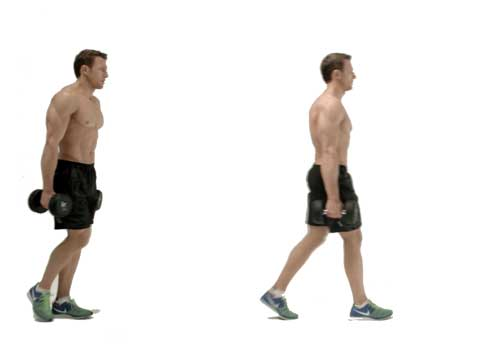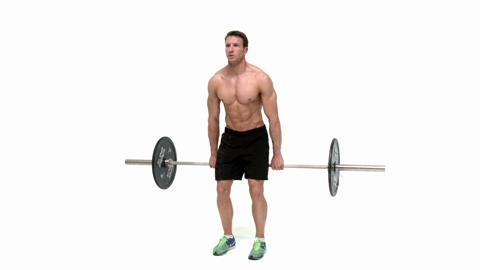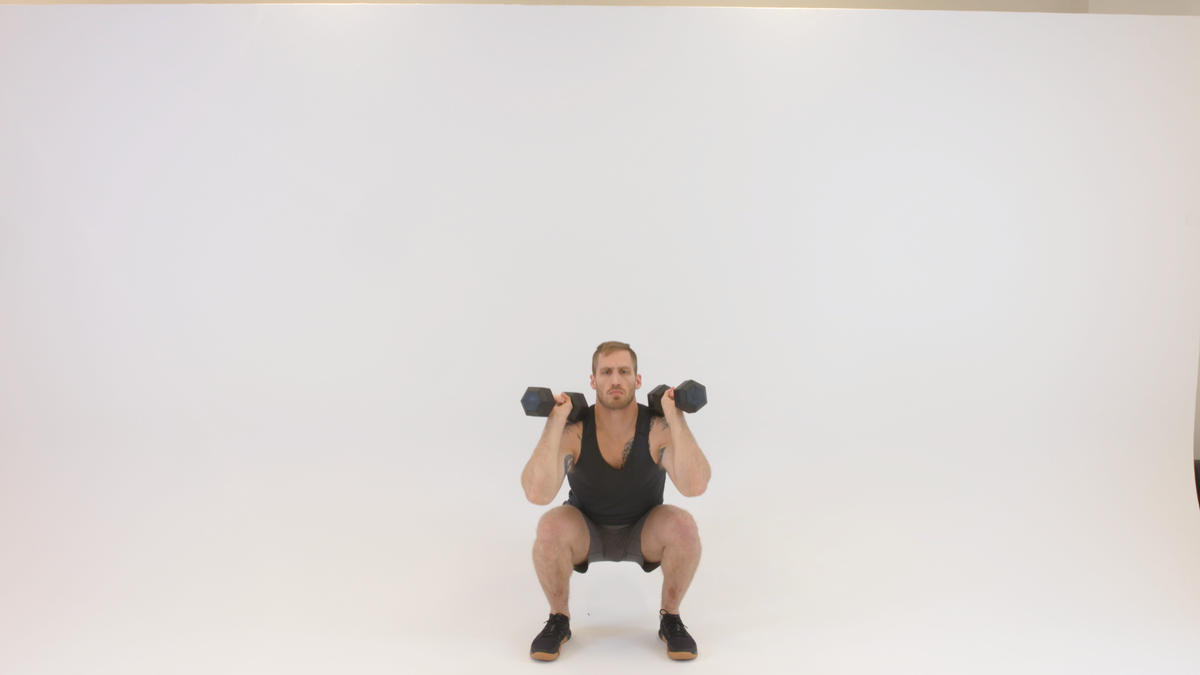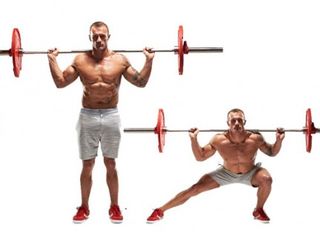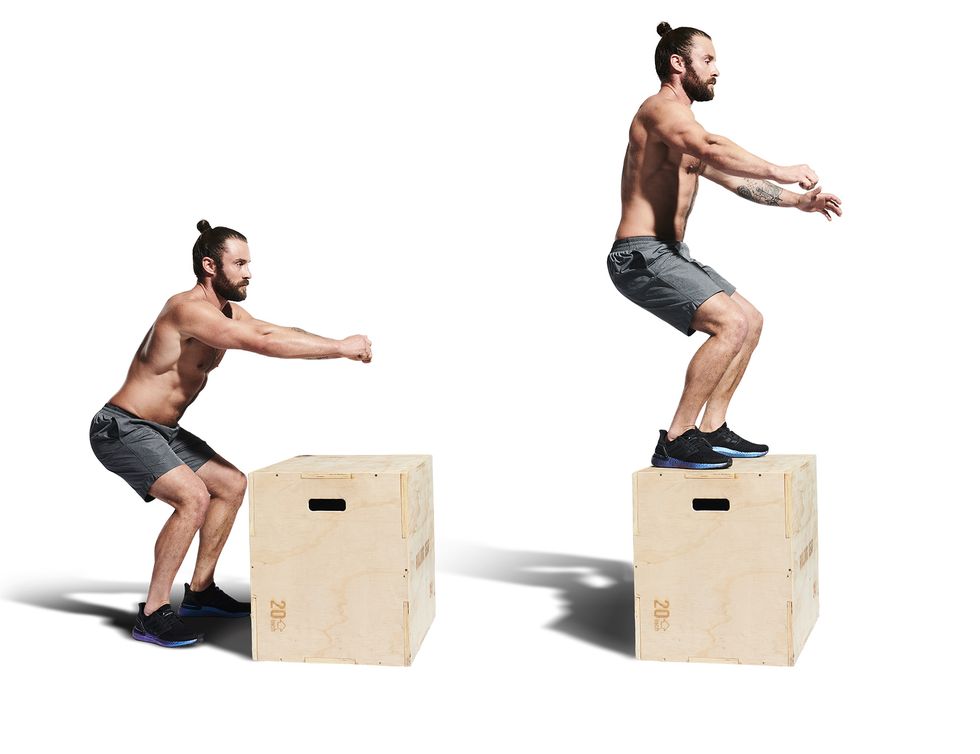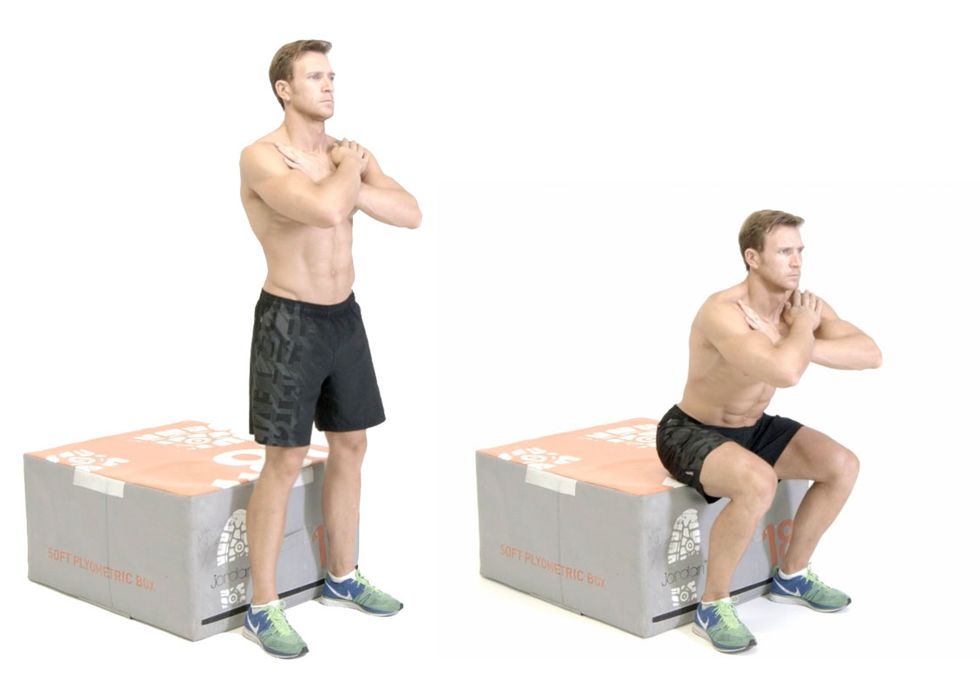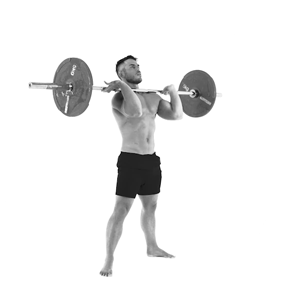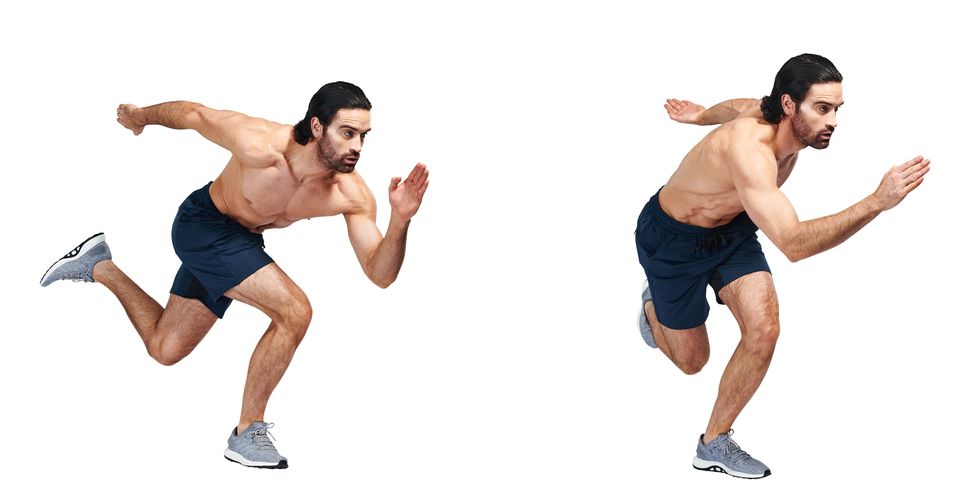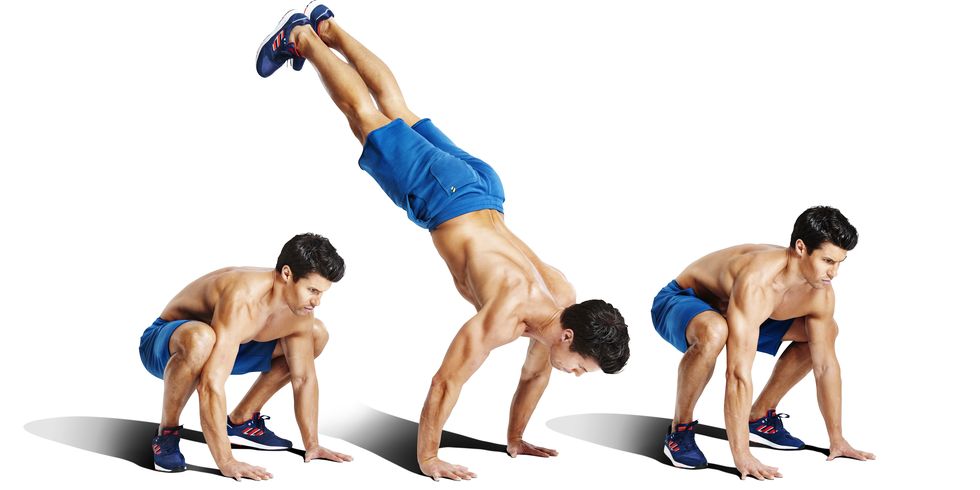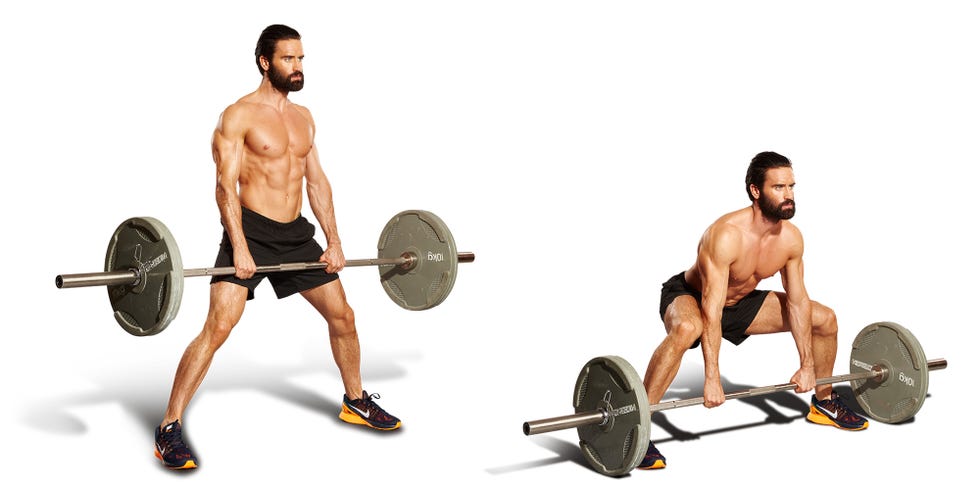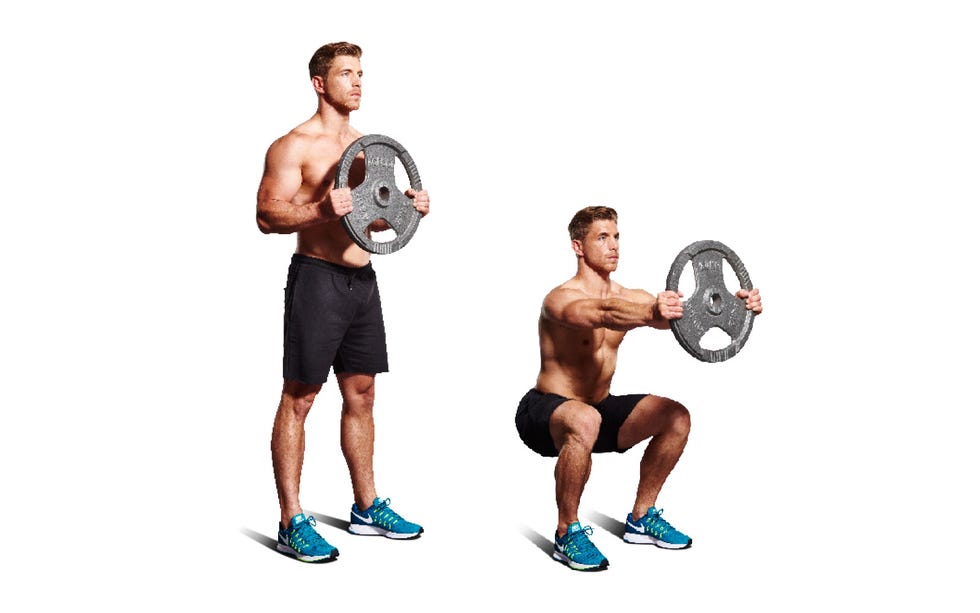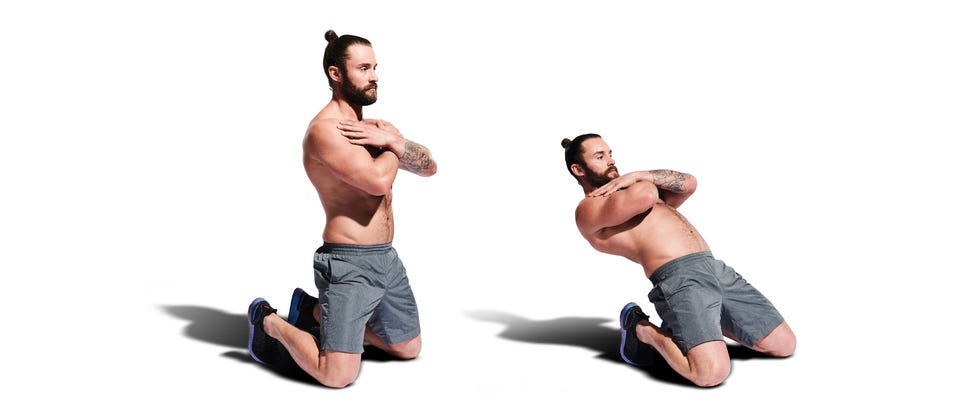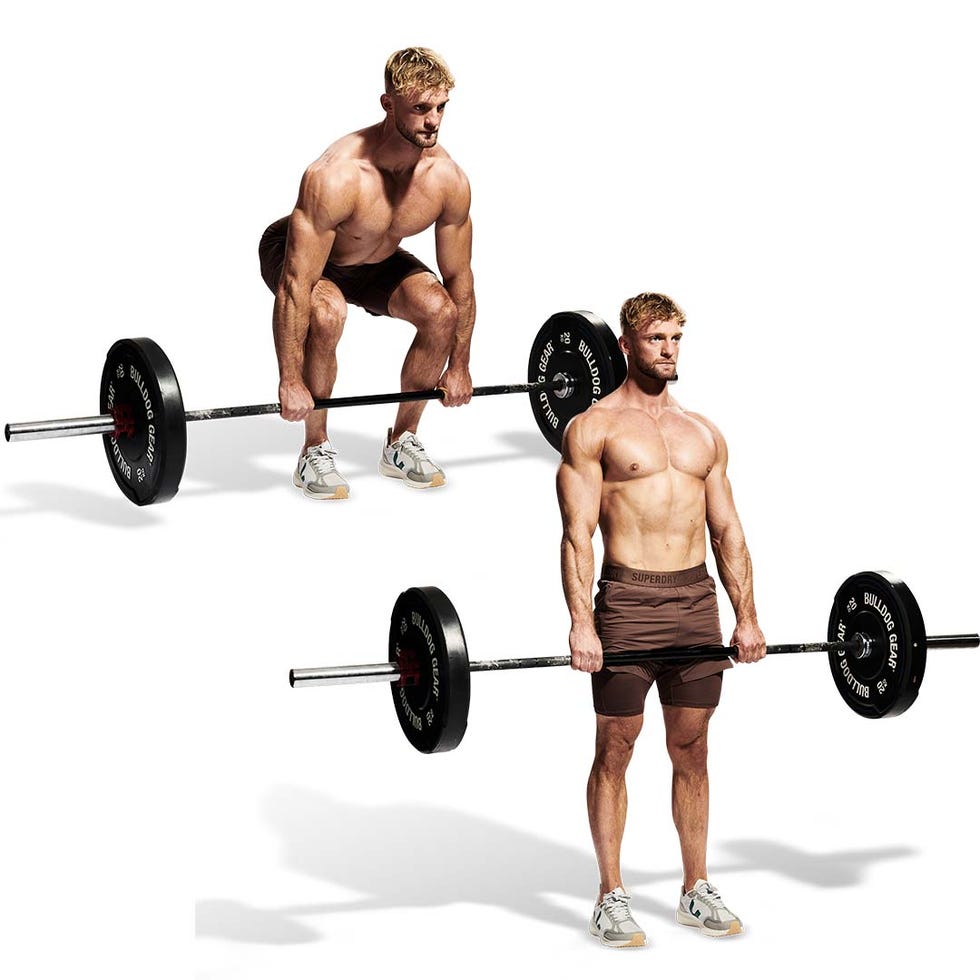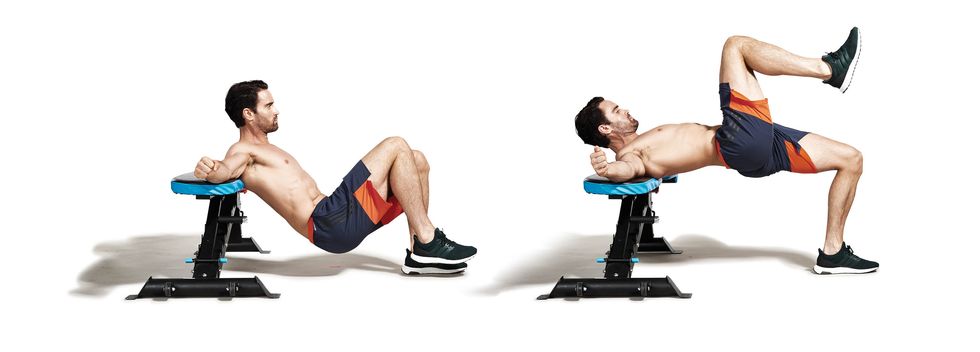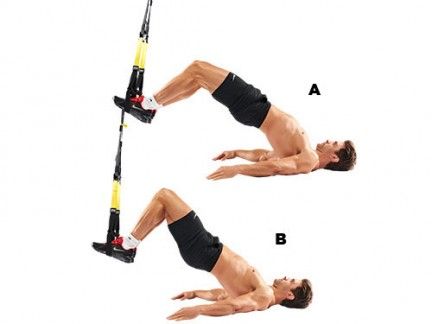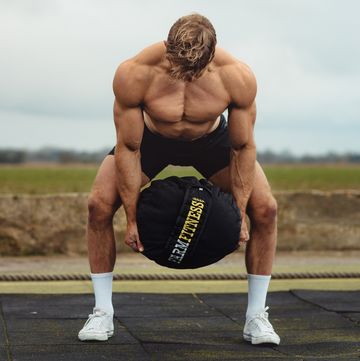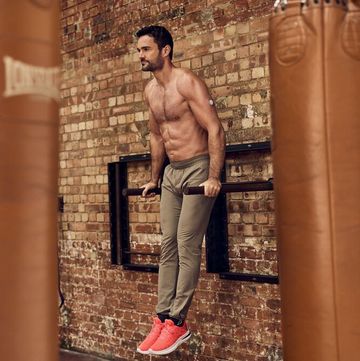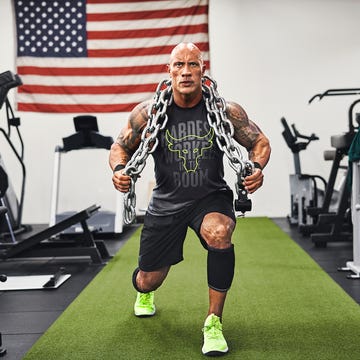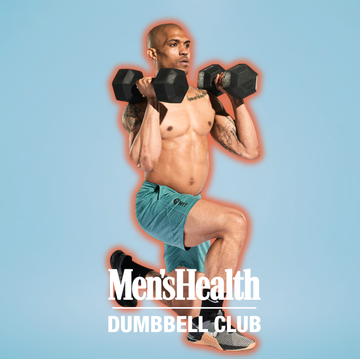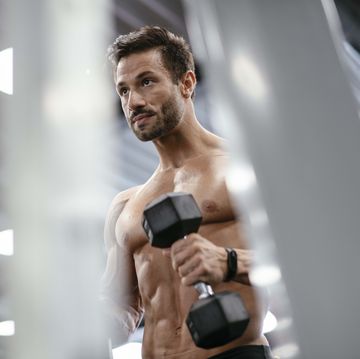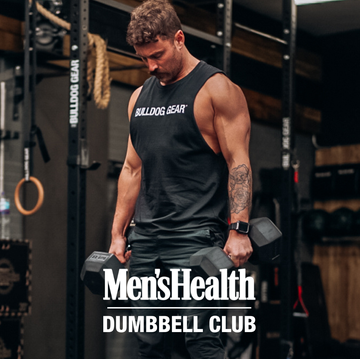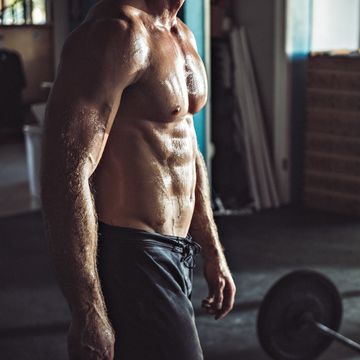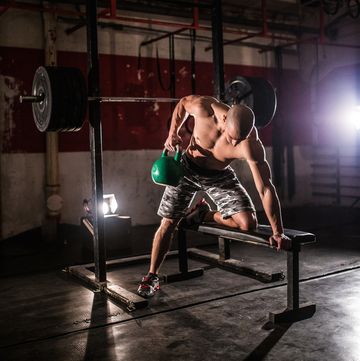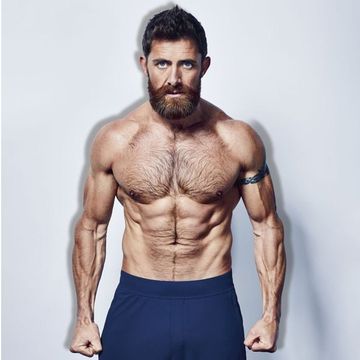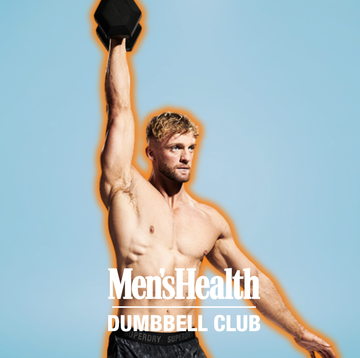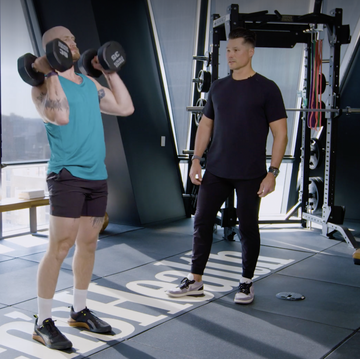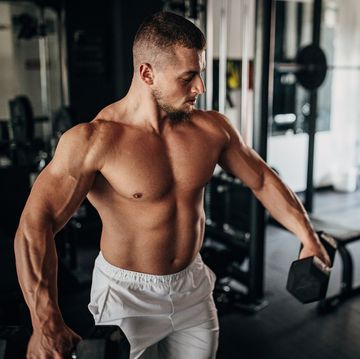When it comes to leg workouts, variety is key. Your quads, hamstrings and glutes are made up of multiple muscles, which are responsible for multiple lower-body functions, so it’s important to have multiple leg exercises in your arsenal and train legs holistically. Going through the motions and performing the same movements, day after day and week after week, isn’t going to cut it here. Don't believe us? Well, according to research, when it comes to exercises and muscle strength, variety really is the spice of life.
Published in the Journal of Strength and Conditioning Research, it was found that constant intensity and varied exercise is more efficient to produce strength gains.
With that in mind, we’ve collected the 40 best leg exercises for your next leg workout, but before we get to them, let’s go over why training legs is so important, what makes up the muscles in your legs and why you should never skip leg day.
Why Training Legs Is So Important
First and foremost, leg exercises target some of your body’s biggest muscles – the largest being your glutes – the foundations on which your fitness is built. Training legs means burning more calories, elevating your T-levels, boosting your big lifts, improving your mobility, and, of course, building strength, power and mass.
You might not know it, but leg workouts are also critical to brain and nervous system health. Your wheels send important signals to the brain that help produce neural cells (essential for handling stress and adapting to challenges) in particular during weight-bearing exercise, research published in Frontiers revealed.
Your Leg Muscles Explained
Understanding the muscles you are working and the role they play will help when performing each exercise. These are the main muscle groups within the leg that you need to know about.
Glutes
The glutes are the engines that help drive the body, deliver explosive power and help maintain proper posture and movement. Without them, you'd struggle walking, let alone squatting.
Adductors
Your inner thigh muscles, are essential for athleticism and power. Made up of five muscles, their job is to stabilise your thighs and pelvis, while allowing for movement, extension and rotation. Adductors are hugely important for squatting, sprinting and moving in multiple directions.
Hamstrings
The hamstrings are a group of muscles that line the back of your thigh. Attaching to the bones of the lower leg behind your knee, the hamstrings cross between two joints — the knee and the hip, acting to bend the former and extend the latter.
Deficits in this muscle group can cause issues in function and sports performance. It may also lead to injury. Having strong hamstrings enable athletes to perform higher quality impact and explosive sports.
Quadriceps
Your quadriceps consist of four muscles: the rectus femoris, vastus lateralis, vastus medialis and the vastus intermedius. Together, these four muscles contain more mass than any other muscle in the body, assisting with every day movements like walking, running, squatting and jumping.
Calves
The main function of the calf muscle is to assist with flexion of the foot, ankle and knee.
Why You Shouldn't Skip Leg Day
On the flip side, skipping leg day one too many times can make you unbalanced and more susceptible to injury.
Need more convincing? How about this: performing single-leg exercises, like the Bulgarian spilt squat, pistol squat and single leg curl listed below, won't just good give you powerful legs, it'll also help you to engage your core muscles and develop better balance. If you're already injured moves like these are good for rehabilitation, since working one side of the body can stimulate the same muscles on the other side of the body too.
Like it or not, leg workouts are going nowhere, so logic dictates you should make full use of it. And when it comes to building muscle size, regularly changing exercises is just as effective as increasing the intensity of your workout, according to a study published in the Journal of Strength and Conditioning.
So don’t be all mouth and no trousers – hit the refresh button on your lower body routine.
#1 Barbell Bulgarian Split Squat
How:
- Stand facing away from the bench, holding a barbell across your upper back. Have one leg resting on the bench behind you, laces down.
- Squat with your standing leg until the knee of your trailing leg almost touches the floor.
- Push up through your front foot to return to the start position.
Why: Scientists looked at muscle activation across a trio of unilateral barbell exercises: the split squat, single-leg squat and Bulgarian (or 'rear foot elevated') split squat in a study published in The Journal of Strength & Conditioning Research. While all three equally target the quads and glutes, this move is particularly effective at targeting the hamstrings, they concluded. 'If you find having the barbell on your back causes you to excessively lean forward, try front loading or replacing with dumbbells by the side instead,' suggests Phillip Leonard, head of personal training at Ten Health & Fitness.
#2 Seated Dumbbell Calf Raise
How:
- Put a weight plate on the floor and rest your toes on it whilst sitting on a bench.
- Place a dumbbell on your knee, your right hand holding the handle whilst your left hand holds the top.
- Lift up your toes as high as possible. Pause, then lower it back onto the weight and repeat.
Why: 'The seated variation deactivates the hamstrings – the focus goes entirely to the soleus,' explains Jonathan Dick, Tier X coach at Equinox Kensington. 'Strengthening your calves can help treat shin splints if you’re spending too much time on the treadmill.' Being notoriously stubborn in terms of muscle growth, your calves will reap the benefits of a little concentrated effort.
#3 Romanian Deadlift
How:
- Stand behind a grounded barbell. Bend your knees slightly to grab it, keeping your shins, back and hips straight.
- Without bending your back, push your hips forwards to lift the bar. From upright, push your hips back to lower the bar, bending your knees only slightly.
Why: “It’s a great variation on the traditional deadlift that focuses on your glutes and superior end of your hamstrings,” says Leonard. Practising hip flexion exercises – like the Romanian deadlift – can seriously improve your sprint speed and agility. After eight weeks of hip flexor-specific training, participants in a University of Florida study saw their sprint and shuttle run PBs improve by around four per cent and nine per cent respectively.
#4 Goblet Squat
How:
- Stand with your legs wider than your shoulders and hold a dumbbell with both hands in line with your thighs.
- Stick your backside out, bend your knees and lower yourself into a squat until the dumbbell touches the floor. Drive back up and repeat.
Why: You get the lower body muscle-building benefits reaped from traditional squats while torching your shoulders and arms at the same time. 'Goblet squats are a great alternative for those who lack the shoulder mobility to maintain proper back squat form,' says Dick. 'Positioning the load in the front of the body will challenge the core and quadriceps more.'
#5 Barbell Side Lunge
How:
- Stand with your legs under your hips and hold a barbell on your back.
- Step your right leg out to the side and lower your body as you bend your knee, keeping your left leg straight.
- Drive yourself back up to starting position and repeat on the other side.
Why: You’ll be a far more agile sportsman. Lateral lunges place emphasis on your hip adductors and abductors, the School of Physiotherapy and Exercise Science reports, making it beneficial for the 'very tight sidestepping manoeuvres' required in American football, rugby, basketball and skiing. 'If you find it difficult to keep an upright torso, try placing a wedge under the heel of the bent leg,' says Leonard. 'This will reduce the amount of hip flexion required, allowing for a more upright position.'
#6 Good Morning
How:
- Place a barbell across your shoulders behind your neck. Ensure your shoulder blades are pushed back to take the weight off the bar.
- Brace your core and slowly bend at the hips to lower your head towards the floor. Pause at the bottom, then reverse.
Why: It’s excellent for building the solid foundations that your big lift PBs depend upon. 'This is a great posterior chain exercise to strengthen both hamstrings and glutes, while challenging the core,' explains Dick. 'Try taking a wider-than-shoulder-width foot position, or ‘sumo’ stance, to really target the glutes.'
#7 Battle Ropes Reverse Lunge
How:
- Hold the ends of the rope in each hand with your thumbs parallel, and your feet shoulder-width apart in an athletic stance.
- Swing your arms up and down in a constant, controlled motion, moving the rope in a wave motion, as you simultaneously step back and lower your knee to the ground to lunge, one leg at a time.
Why: Reverse lunges boast all the benefits of regular lunges, but they’re much easier on the knees. Left to our own devices, most of us have a tendency to send our knees past our toes: a high-risk injury zone. Lunging in reverse eliminates that risk. 'To make it extra spicy and increase the glute focus, start with both feet on a low box and step back and down into more depth,' Leonard suggests.
#8 Kettlebell Pistol Squat
How:
- Hold one kettlebell with both hands just under your chin.
- Lift one leg off the floor and squat down with the other.
- Drive through the heel and bring yourself back up to standing position, without letting your leg touch the floor. Lower back down and repeat.
Why: 'A great single leg exercise to challenge hip mobility and stability that transfers over directly to daily life,' says Dick. It’s also incredibly tricky to master, requiring strength, dexterity and balance in equal measure – giving those who can execute it flawlessly a free pass to gloat.
#9 Hip Thrust
How:
- Lean the top of your back against a bench, creating a 45-degree angle between yourself and the support.
- Squeeze your glutes and core and raise your hips to lift the load until your back is straight and your knees form a 90-degree angle. Return to the starting position.
Why: Hip thrusts build power in your glutes like no other. Your derriere might not be an aesthetic priority, but it should be from a training perspective – weak glutes have a negative impact on the movement mechanics of your entire leg, which spells trouble for your knee joints and ankles. 'Bullet-proof your technique with a strong brace before pushing into the lift,' says Leonard. 'Make sure to squeeze those glutes as hard as you can, holding the top position for at least a split second.'
#10 Single Leg Curl
How:
- Lie face down on the leg curl machine with your heels against the lower pad and the bench against your thighs.
- Bend one knee to pull the pad up towards your backside as far as possible, then return to the start position and repeat on the other side.
Why: 'Single leg curls are great for strengthening the hamstrings, and doing so can help bulletproof your knees,' explains Dick. 'A great thing to try is eccentric-focused reps – use both legs to perform the curl and use only one leg to return the weight back to the start. This allows you to overload each leg without risking injury.'
#11 Single Leg Deadlift
How:
- Hold two dumbbells in front of your thighs, palms facing inwards.
- Slowly lift one leg straight behind you, bending the other slightly, and lean forward so that your arms lower the dumbbells towards the floor. Pause, then return to upright position.
Why: Unilateral exercises, like the single leg deadlift, work your mind-muscle connection a little harder because of the need to stay balanced. Your muscles activate quicker to keep you from falling over, known as a faster rate of force production (RFD). A study published in the European Journal of Applied Physiology found that unilateral exercises improve RFD by as much as 40 to 60 per cent. 'If you struggle with balance, my go-to regression is to use the landmine instead,' says Leonard.
#12 Leg Extension
How:
- Sit in a leg extension machine with your ankles against the lower pad. Use your quads to push forwards and straighten your legs in front of you, then return to the start position.
Why: Tag this onto the end of your workout – it’s the ultimate quad-centric finisher. 'A great strengthening exercise for the quadriceps, which will again help with protecting the knees as we get older,' says Dick. 'Again, try using eccentric-focused reps: both legs perform the extension, one leg lowers the weight back.'
#13 Prowler Push
How:
- To push, keep your arms, neck and back in a static straight line. When you walk forwards, only move your legs.
- To pull, grip the sled handles, bend at the knees while keeping your back straight and upright, and walk backwards with firm steps.
Why: No matter whether your end goal is improved endurance, power, or functional muscle – and especially if it’s all three – the prowler sled has you covered. There’s minimal risk of injury and you'll recover quicker, too, since the movement is ‘concentric’, says Leonard. 'Muscle soreness largely comes from the eccentric phase of a movement – think: the lowering phase in a squat. That means recovery from a heavy prowler push will be quicker than exercises like back squats or deadlifts.' Progressing is simple: either up the weight or push faster.
#14 Farmer's Carry
How:
- Hold two dumbbells by your side. Keep your arms strong and walk short, quick steps as fast as possible.
- Turn around and walk back.
Why: Don't underestimate the farmer’s carry – it's tough on your entire body, from your delts to your hamstrings. 'You can think of this as a walking plank,' explains Dick. 'To perform a farmer’s carry properly, you need to maintain the same body position as you would for a plank. Walking heel-toe, standing tall and stabilising through your glutes with each step.'
#15 Sumo Squat
How:
- Stand with your feet wider than shoulder-width apart holding a barbell across your upper back with an overhand grip.
- Taking care to not arch your back, push your hips back and bend your knees to lower your body until your thighs are parallel to the floor.
- Drive you heels into the floor to push yourself explosively back up to the start position.
Why: Switch up your squat routine with the sumo variation to give your hip adductors and abductors a blast. Most people can squat deeper using the sumo style, which will bring flexibility benefits. 'The wide stance means there is less distance to travel to reach parallel,' says Leonard.
#16 Clean and Jerk
How:
- Sink down into squat position and hold a barbell with overhand grip, shoulder width apart.
- Get under the bar as you drive it up towards your shoulders, then straighten your legs to stand. Bend your legs and use momentum to jump slightly and push the bar straight up above your head.
- Reverse the action to lower the barbell back down to the floor.
Why: Don’t sleep on this Olympic-style weightlifting move. 'If your goal is to build power and speed, the clean and jerk is a must,' says Dick. 'A favourite of sprint athletes like Usain Bolt, it’s great for developing explosive hips. This definitely requires a high level of both mobility and training skills.' If it’s good enough for Bolt...
#17 Barbell Hack Squat
How:
- Stand with your feet shoulder width apart and hold a barbell behind you at arms’ length.
- While keeping your head up and back straight, squat until your thighs are parallel to the floor. Drive through your heels to stand back up as you breathe out.
Why: The hack squat will carve out those coveted vastus medialis, or VMO, gains – the teardrop-shaped muscle on your quads. Aesthetics aside, the muscle is a key knee stabiliser, so this move will help safeguard your knee joint. 'Utilising different movement patterns outside of the traditional back squat can be rut-busting and allows us to become more robust in those main lifts,' says Leonard.
#18 Thruster
How:
- Hold two kettlebells by their handles but so the weight is resting on the back of your shoulder.
- Slightly bend your knees and squat down, keeping your legs in line with your shoulders.
- Drive through your legs and straighten them, extending your arms as you do so to raise the kettlebells above your head. Squat down and repeat.
Why: 'Like the clean and jerk, thrusters can be an excellent choice for developing explosive power,' explains Dick. 'They also require a high level of both mobility and training skills.' He suggests using this move as a cardio finisher, performing 5 to 10 reps every minute on the minute (EMOM) for 5 to 10 rounds.
#19 Standing Long Jump
How:
- Lower yourself into a squat position with your feet shoulder-width apart. Swing your arms back and use them to propel yourself forward, then bring your legs forward for additional momentum.
- Jump as far as you can and land on the soles of your feet.
Why: A bona-fide power-building move, the standing long jump improves the reaction of fast-twitch muscle fibres throughout your body – particularly when it comes to your glutes, quads, hip flexors, calves and hamstrings. Being a plyometrics exercise, it’ll get your blood pumping, too. 'If you’re looking to develop explosive horizontal power, these are number one,' says Leonard. 'To reduce the stress on your knees, aim to jump up and forward.'
#20 Incline Treadmill Sprint
How:
- Increase the incline on a treadmill and sprint at full speed for the designated time.
Why: Cardio on leg day? Well, yes actually. 'These are great to throw in at the end of a session to develop lower body strength and power,' says Dick. 'When you’re already fatigued from lifting, the incline serves as a built-in safety net and naturally reduces limb speed – protecting you from any potential hamstring injuries.'
#21 Barbell Side Lunge
How:
- Stand with your legs under your hips and hold a barbell on your back.
- Step your right leg out to the side and lower your body as you bend your knee, keeping your left leg straight.
- Drive yourself back up to starting position and repeat on the other side.
Why: Not only will you be addressing potential strength imbalances on either of your legs, the barbell side lunge will improve your balance, strengthen your stabilising muscles and work your glutes.
#22 Box Jumps
How:
- Set yourself a comfortable distance from the box with feet shoulder width apart.
- Drop quickly into a quarter squat, swing your arms and explode upwards to jump onto the box. Land as softly as possible. Now step backwards off the box under control.
Why: If you want to build functional muscle and leave no muscle untorn after your lower-body workout, then it's hard to beat box jumps. They'll redline your heart rate while building stronger, more powerful glutes and quads.
#23 Box Squats
How:
- Place a box behind you and stand with your feet shoulder width apart. Sit back into a squat until you sit on the box.
- Pause and then push up keeping the weight on your heels.
Why: If you're struggling to hit full depth during bodyweight or weighted squats, box squats are the ideal middle ground to test your strength while emphasising proper technique. Once you've got it nailed, begin adding weights — dumbbells, barbells or kettlebells — to make it harder.
#24 Barbell Box Step-Ups
How:
- Stand with a barbell balanced on your shoulders behind your neck. Place your right foot onto the elevated platform and push up through your heel to lift yourself up and place your left foot on the platform.
- Step back down with your right foot, concentrating on flexing your hip and the knee of your left leg. Repeat all your reps on one side, then swap legs.
Why: Ideal for boosting strength in the squat rack, step-ups will help you build 'driving' power to improve your strength from the bottom position of a back squat. They'll also challenge your core as you try to balance the barbell.
#25 Barbell Front Squats
How:
- Stand with your feet shoulder-width apart holding a barbell across your upper chest. You can either support the weight on your fingers, with wrists extended, or cross your arms to support the weight.
- Taking care to keep to not arch your back, push your hips back and bend your knees to lower your body until your thighs are parallel to the floor. Drive your heels into the floor to push yourself explosively back up to the start position.
Why: Like squatting, but bored of back squats? The front squat is an ideal leg exercise, as the front-loaded barbell will help improve shoulder, ankle and hip mobility. Your core will be firing off to keep you upright and your back safe, too.
#26 Sandbag Walking Lunge
How:
- Place a sandbag behind your neck and hold it with both hands.
- Lunge forward as far as you can with your right leg, bending your trailing knee so it almost brushes the floor. Use the heel of your right foot to push yourself off into the next lunge, this time leading with your left leg.
Why: Whether you love or hate sandbags, there's no denying they're a seriously effective instrument for six-pack building. As the sand moves around the bag, your core muscles will be fighting to keep you upright as you move forward.
#27 Bodyweight Split Squat
How:
- Stand facing away from bench with one leg resting on it, laces down.
- Squat down with your standing leg until the knee of your trailing leg almost touches the floor. Push up through your front foot to return to the start position.
Why: Whether you use this as a warm-up or as a home workout staple, the bodyweight split squat is a powerful tool for building balance, stability and strength in your quads and glutes.
#28 Skaters
How:
- Stand with your feet hip-width apart. Jump to your left and shift your weight onto your left leg while your right curtsies behind it.
- Laterally jump to your right side, landing on your right foot. Visually, you'll look like you're skating (hence the name).
Why: This move will help with quickness and agility while also strengthening knee stability.
#29 Skipping
How:
- Swinging a rope above your head with both hands, keep your feet together in the bounce, landing with soft knees, but ensure your legs are straight and avoid lifting your knees or donkey-kicking to conserve energy.
- Keep your hands close to your sides and make sure most of the movement comes from your wrists to avoid damaging your shoulders. Each revolution of the rope is a rep.
Why: Skipping will give your legs a serious burn and is also a serious cardiovascular and fat-burning workout in its own right.
#30 Donkey Kicks
How:
- Begin with your feet set about 6in apart, then drop into a squat. Your knees should be bent and torso tilted forward at 45 degrees. Keeping your upper body still, draw your right heel back and up toward your glutes.
- Brace your core for balance and shoot your legs back and up in one explosive movement. Lean forward as you kick, taking your full bodyweight onto your hands.
Why: This move targets the glutes – the engine room muscle that determines your propensity for speed and ability to jump high.
#31 Sumo Deadlift
How:
- With your feet wider than shoulder-width apart, squat down and grasp a barbell with your hands almost touching.
- Keep your chest up, pull your shoulders back and look straight ahead as you lift the bar.
- Focus on taking the weight back onto your heels and keep the bar as close as possible to your body at all times. Lift to thigh level, pause, then return under control to the start position.
Why: '[With the sumo deadlift], you have a lot of freedom to move over a shorter range of motion,' says Men’s Health US fitness director Ebenezer Samuel. '[Because] we get our legs wider, we don't have to hinge quite as far.'
#32 Bus Driver Squat Hold
How:
- Stand with your legs wider than your shoulders and hold a weight plate with both hands extended out in front of you.
- Stick your backside out, bend your knees and lower yourself into a squat. Hold in this position for 30 seconds to a minute.
Why: This will burn your quads, but is also a great prehab and warm-up exercise that works wonders for your rotator cuffs.
#33 Walking Lunge
How:
- Stand tall with your core braced, step one foot forward and sink into a deep lunge, rear knee lightly touching the floor.
- Explode forwards back into a standing position, then immediately step the opposite leg forward, repeating the lunge on the opposite side, repeat.
Why: Seeing as we've mentioned almost every other type of lunge in this story, we couldn't leave out the classic walking lunge. Performed with or without weights, this exercise is a classic that can be performed almost anywhere.
#34 Kneeling Leg Extension
How:
- Kneel on the floor with your knees a little wider than your hips and your arms across your chest.
- Keep the body in a straight line from the top of your head to your knees. Engage your core and slightly tuck your pelvis under.
- Lean back so that you can feel your quads working, work within your range of movement and then return back to the upright position ready to repeat.
Why: The 'poor man's leg extension' or kneeling leg extension is an effective way of working your quad muscles without needing a machine. You can work within your range of movement and push to an intensity level that suits you in the comfort of your own home.
#35 Leg Press
How:
- You can use the seated leg press or 45-degree leg press. Begin with your feet planted in the middle of the foot pad, about shoulder-width apart with your back flat against the seat.
- Control the weight and bend the knees so the plate moves towards you – don't let your lower back lose contact with the seat.
- Push the plate away from you, ready to repeat.
Why: For loading some decent weight on your leg exercises, the plate loaded leg press is an efficient machine to get the job done without the instability of free weights. Use a foot position that suits your hip and ankle mobility, keep the entirety of the back flat against the seat with each rep and make sure you don't lock out your knees.
#36 Dumbbell Box Step-Ups
How:
- Stand in front of a box, with your feet hip-width apart, heavy dumbbells at your sides.
- Step one foot up on top and drive your foot into the box.
- Lean forward slightly to keep your balance, but keep your torso upright.
- Once at the top, stand up fully by extending your knees and hips.
- Slowly step backwards off the box and repeat with the opposite leg.
Why: Step-ups are efficient quad builders that will also elevate your heart rate. The perfect finisher for the end of workouts.
#37 Conventional Deadlift
How:
- Walk your shins to the bar with your feet underneath your hips.
- Send the hips behind the heels and reach your hands towards the bar. Your shoulders should be over the bar and middle foot underneath.
- Keeping your back and head in line, retract the shoulder blades while holding your torso rigid to create tension between you and the bar.
- Push the floor away from you while keeping the bar close.
- Lock out the hips without sending the weight back and reverse the movement.
Why: Aside from building a strong set of wheels, the conventional deadlift hits every muscle in the body. The compound move is a staple amongst lifters, and for good reason. Position it at the beginning of your programme and aim for 3-4 sets and 6-12 reps.
#38 Pistol Squat
How:
- Stand with your arms out in front. Balance on one leg with your other leg in front of you, as high as possible. Keep your torso upright.
- Shift your body weight over to the opposite side of your bent leg. Squat as low as possible while keeping your leg elevated off the floor and your supporting knee pointed in the same direction as your foot on the floor.
- Push through your supporting leg to raise your body to the starting position.
- Switch legs after each rep.
Why: The pistol squat is a unilateral exercise, meaning it works one limb at one time. In doing so, you can even out strength disparities between the limbs and bolster your core strength. Plus, no equipment is needed. The pistol squat is an advanced move, if you haven't mastered it yet, check out this guide.
#39 Single Leg Hip Thrust
How:
- Start with your upper back supported on a bench and both feet planted on the floor.
- For the correct set up, when raising your hips, your knees, hips and shoulders should be in line and your heels should be under your knees. Your chin should also be tucked.
- Begin the rep with one leg lifted, push through the supporting leg so that your hips extend.
- Slowly reverse the movement so your hips sink close to the floor, ready to repeat.
Why: The single leg hip thrust is another exercise you can complete at home and requires no equipment. The results aren't only aesthetics related, for athletic performance, this move will pay dividends towards your sprints on the pitch.
#40 TRX Hamstring Curl
How:
- On your back, put your feet in the stirrups, with legs slightly bent and hips raised.
- Pull your feet towards you, keeping your hips as high as possible.
- Squeeze the hamstrings and reverse the movement.
Why: Hitting your hamstrings hard enough with home equipment can be tricky, however TRX hamstring curls deliver a hammy burn like nothing else. No TRX? Try Swiss ball hamstring curls for the same hamstring building and strengthening effect.
Kate is a fitness writer for Men’s Health UK where she contributes regular workouts, training tips and nutrition guides. She has a post graduate diploma in Sports Performance Nutrition and before joining Men’s Health she was a nutritionist, fitness writer and personal trainer with over 5k hours coaching on the gym floor. Kate has a keen interest in volunteering for animal shelters and when she isn’t lifting weights in her garden, she can be found walking her rescue dog.
Robert Hicks is the Executive Editor at Men’s Health UK. A Sport Science graduate and author of three fitness books published by Bloomsbury, Robert has written numerous articles on health, fitness and nutrition and created several documentaries, most notably Britain’s Steroid Epidemic and The Faces of Attempted Suicide. Robert has been working at Men's Health UK for seven years.
